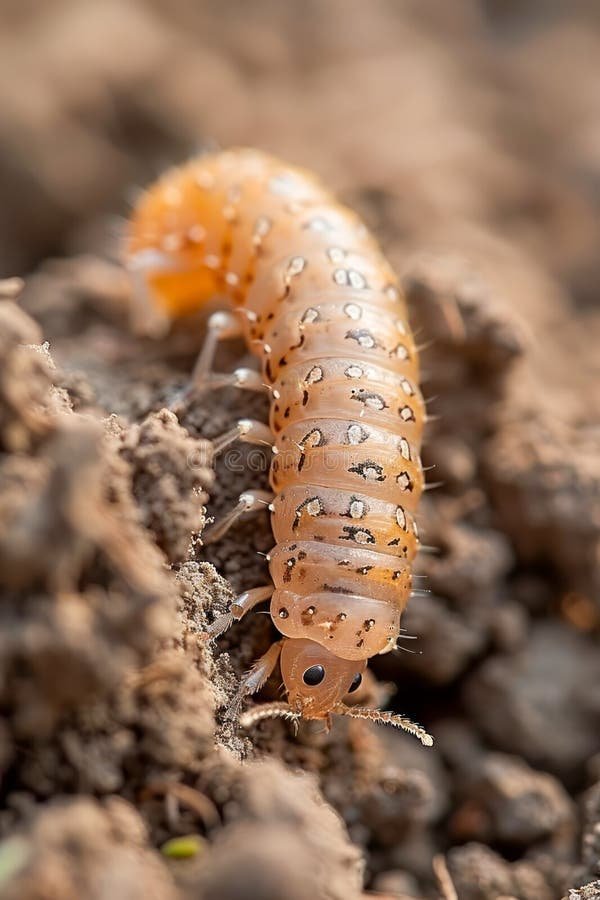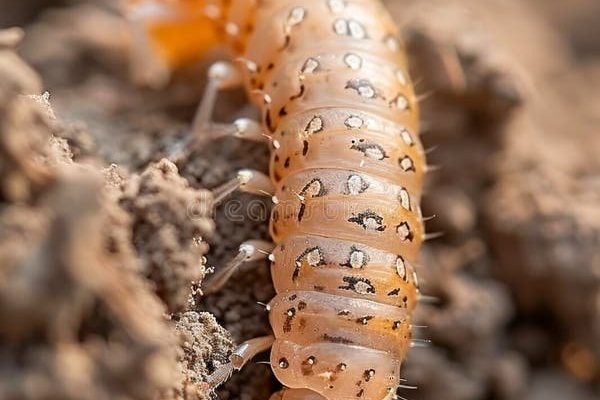
Grub worms are the larvae of various beetles, and they play a role in a healthy ecosystem, breaking down organic matter and serving as food for birds and other animals. However, too many of them can wreak havoc on your lawn. Understanding where they thrive can help you manage your garden better. Picture your soil as a cozy home for these little critters, but the type of home matters. So let me explain how sandy and clay soils impact grub worm populations.
What Are Grub Worms?
Before we jump into the soil debate, let’s clarify what grub worms actually are. Grub worms are typically the larvae of beetles like Japanese beetles or June bugs. They look like little white caterpillars with a C-shape, and they can grow up to an inch long. In their larval stage, they feed on roots and organic matter found in the soil.
Here’s the thing: while they can help decompose matter, having too many grub worms can lead to significant problems in your garden or lawn. They can damage grass roots, leading to brown patches that are unsightly and unhealthy. Imagine waking up to a lawn that looks like it’s just come out of a drought, even when you’ve been watering it!
It’s important to know that grub worms go through several stages in their life cycle. They start as eggs laid in the soil during the summer months, then hatch into larvae, and eventually pupate before becoming adult beetles. Understanding this lifecycle is key to managing their populations effectively.
Characteristics of Sandy Soil
Now that we’ve covered the basics of grub worms, let’s talk about sandy soil. Sandy soil is light and drains quickly. Think about it like a fine beach where water flows right through, never lingering too long. This means that sandy soil dries out faster than other soil types, which can be good for some plants but tough on others.
For grub worms, sandy soil isn’t the ideal environment for thriving. These critters prefer a little moisture, which sandy soil often lacks. Without enough moisture, grub worms may struggle to survive, making sandy soil less likely to support large populations.
However, sandy soil can still attract grub worms during certain times of the year when there’s enough moisture around. If you’ve watered the area or if there has been rainfall, they may show up, but their numbers are usually more limited compared to other soil types. So, if you’re dealing with a sandy garden, you might find that grub worms are there, but not in overwhelming numbers.
Characteristics of Clay Soil
On to clay soil! This type of soil is dense and sticky, like a clay pot. It retains water well, which means it can stay moist for longer periods. While that’s great for many plants, it’s a different story for grub worms.
The moisture-rich environment of clay soil is perfect for grub worms to thrive. With plenty of water, they can find the nutrients they need to grow strong and healthy. In fact, clay soil can create ideal conditions for a larger grub worm population. So, if you have clay soil, you might notice more of these little critters munching on your grass roots.
However, it’s worth noting that clay soil can become compacted, making it hard for grub worms to burrow and move around. Depending on how dense your clay is, it might create challenges for them. But overall, if the conditions are right, you can expect to see more grub worms in clay than in sandy soil.
How Soil Texture Affects Grub Worm Populations
So, why does the texture of the soil matter so much for grub worms? Well, it all comes down to moisture retention, nutrient availability, and space for movement.
– **Moisture Retention**: As we discussed, sandy soil drains quickly and tends to dry out. This makes it less hospitable for grub worms. In contrast, clay soil holds moisture, creating a safer haven for these larvae.
– **Nutrient Availability**: Clay soil generally has better nutrient availability since it retains organic matter. Grub worms feast on the roots of grass and other plants, and with a rich environment, they can thrive.
– **Space for Movement**: The compaction in clay can sometimes restrict grub worms’ movement, but generally, they prefer the denser structure of clay over sandy soil where they might feel exposed and vulnerable.
In summary, while both sandy and clay soils can host grub worm populations, **clay soil** tends to support larger numbers, thanks to its moisture and nutrient content.
Managing Grub Worms in Your Garden
If you’re looking to keep grub worms in check, there are a few things to keep in mind, especially depending on your soil type.
1. **Monitor Moisture Levels**: If you have sandy soil, make sure to keep an eye on moisture levels. Watering can help support plant health but may not be as effective in reducing grub worm populations.
2. **Aerate Your Soil**: For clay soil, aerating can help reduce compaction. This not only helps grass roots but also makes it harder for grub worms to find a cozy home.
3. **Use Natural Predators**: Birds love munching on grub worms. If you encourage birds in your garden, they can help keep grub worm numbers down naturally.
4. **Regular Lawn Care**: Maintaining a healthy lawn through regular mowing and fertilizing can make it less attractive to grub worms. A strong lawn can withstand some grub feeding.
Managing grub worms is all about understanding their environment. By tailoring your approach based on whether you have sandy or clay soil, you can create a healthier space for your plants while keeping an eye on these little garden guests.
So, when it comes to the question of whether grub worms thrive in sandy or clay soil, the answer leans toward clay soil. While both soil types can harbor these larvae, clay soil offers the moisture and nutrients grub worms need to thrive. As a gardener, being aware of your soil type and how it interacts with pests can make all the difference in maintaining a healthy garden.
By taking steps to monitor and manage your soil, you can find the right balance between nurturing your plants and keeping grub worm populations under control. Remember, a healthy garden is all about harmony, so treat your soil well, and it will treat you back!

